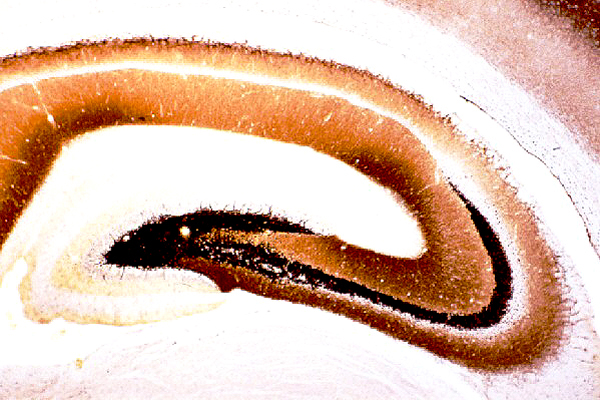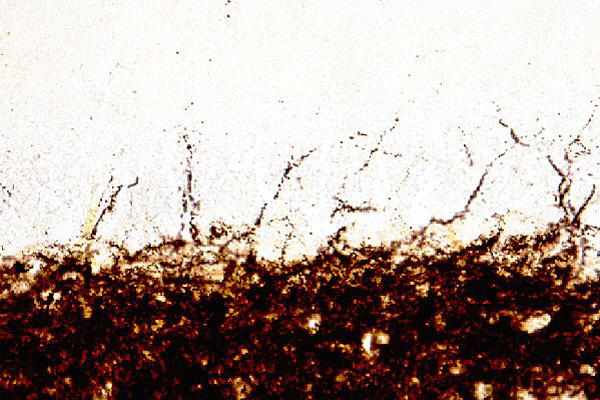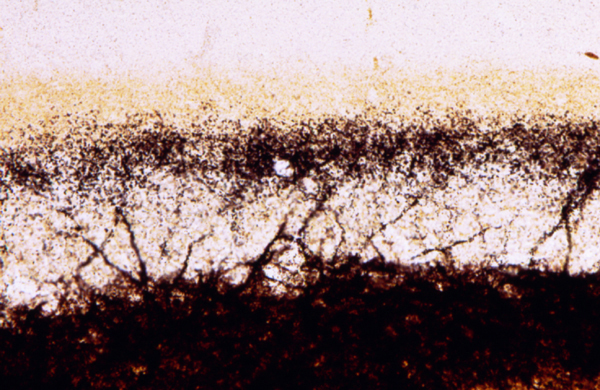Timms Sulphide Silver Staining
Description
Timm’s sulfide silver staining has been used to visualize a variety of metals in brains and other tissues¹. Among these are the trace metals essential for life, such as Zn, Cu, Fe, Co, and Ni, as well as toxic metals, e.g., Hg, Cd, Pb, As, Bi, TI, Au and Ag. This method, originally developed by Timm², was later modified3. The principal of the technique is based on sulphide-precipitation of metals in tissue followed by a physical development. During the latter stage, the metal sulphides catalyze the reduction of silver ions by reducing agents. This technique has proven to be particularly useful in visualizing zinc-containing neurons and the detection of newly sprouted axons and axon terminals within the central nervous system (cf. photo samples below).
This service includes tissue preparation, sectioning, staining, coverslipping and labeling the slides. As a result, your will receive up to 40 Timm’s sulfide silver stained sections per brain or per tissue block ready for microscopic observations. A set of Nissl (or H&E) stained sections adjacent to those used for silver-staining can also be provided at a low cost.
Remarks:
- A quotation is required before placing an order.
- The investigator needs to provide tissue fixed with special fixative.
- Please contact us for more information.
References:
- Haug F.-MŠ (1973) Adv. Anat. Embryol. Cell Biol., 47:1-71.
- Timm F (1958) Dtsch. Z. fϋr Gerichtl. Med., 46:706-711.
- Danscher G (1981) Histochemistry, 71:1-16.



